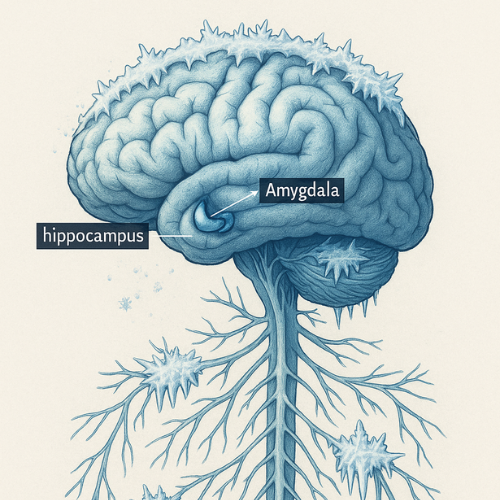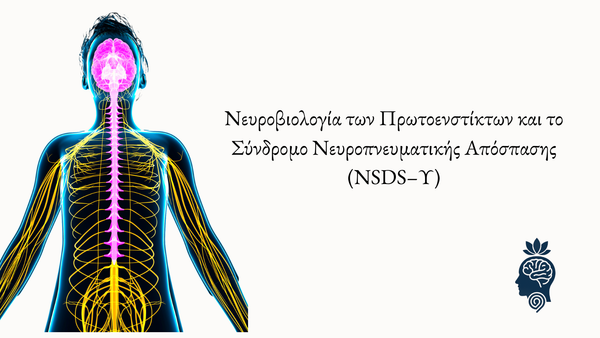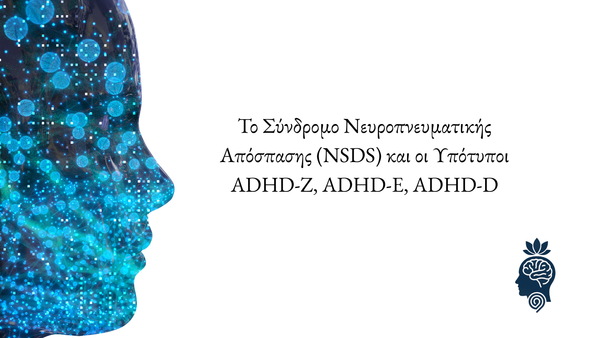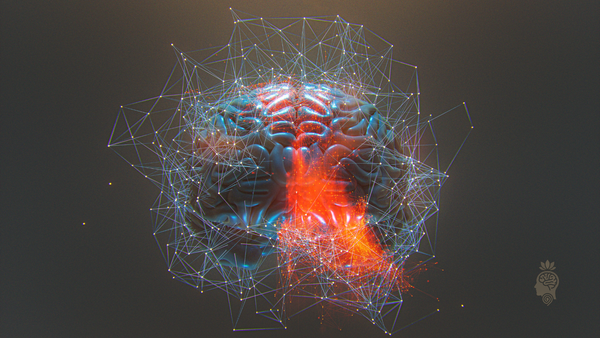The Frozen System, the Amygdala, the Hippocampus, and the True Nature of Procrastination

A Neurospiritual Analysis
Procrastination is not a character flaw. It is not simply a lack of motivation. In Neurospiritual Psychotherapy, we view procrastination as the result of a frozen neurological defence mechanism, intricately connected with the functions of the amygdala, hippocampus, and the autonomic nervous system. What appears as "laziness" is, in essence, frozen wisdom yet to find a safe ground to express itself.
- The Amygdala: The Neural Alarm
The amygdala is responsible for detecting threats and activating the survival response (fight–flight–freeze). When a threat is emotional, prolonged, or from childhood, the amygdala chooses freeze as the least dangerous path. The problem begins when this choice becomes entrenched, creating a consistent neural pattern of immobility.
- The Hippocampus: The Temporal Mapper of Memory
The hippocampus, responsible for memory and narrative, becomes blocked when the amygdala is hyperactive. This results in:
- The inability to logically interpret experiences.
- The inability to "temporalise" trauma.
- Remaining stuck in a sensory past.
Essentially, our soul says: I cannot move forward because what I could not safely feel is still unfinished.
- The Autonomic Nervous System: When the Body Freezes
The autonomic nervous system freezes when:
- The sympathetic system remains on alert.
- The parasympathetic system (especially via the dorsal vagal complex) suppresses mobility, speech, and action.
This creates what we call in the Neurospiritual Approach:
“Frozen System” is a set of somato-neural blockages, where:
- The will is frozen.
- The body is immobilised.
- Thought races but does not connect with action.
- Procrastination: The Silent Cry of Freezing
In traditional psychology, procrastination is often addressed cognitively: with goals, disciplinary techniques, and guilt. In Neurospiritual Psychotherapy, we approach it as a neurosomatic symptom of disconnection from safety.
It's not that I don't want to act.
It's that something inside me considers it dangerous to act.
Action freezes because the past hasn't been expressed, and the body hasn't been regulated.
- Neurospiritual Therapeutic Intervention
The therapeutic release of the frozen system requires a holistic approach on three levels:
a) Neurological Unfreezing
- Breathing techniques, polyvagal regulation, and pulse meditation.
- Activation of kinetic energy through gentle physical contact or kinesthetic practice.
b) Reconstruction of the Hippocampus Through Neurofantasy
- Neurofantasy techniques such as Zen Emergence of Memory.
- Safe reconstruction of past experiences through imagery, storytelling, and conscious observation.
c) Spiritual Rewriting
- Use of Neuroinvocation (mindful meditative prayer) to reunite with the soul’s "wants."
- Restoration of meaning, not through metaphysical ideas, but through spiritual embodied focus.
Procrastination is not a problem of will.
It is frozen wisdom waiting to thaw.
Neurospiritual Psychotherapy doesn't try to "fix" the person.
Instead, it shows them how to free themselves from the freeze of their history, so action becomes a natural extension of the soul.
Bibliography & References
Koumaradios, Ch. (2025). The Unspoken Trauma – The Hippocampus, the Amygdala, and the Neurospiritual Therapy of Childhood Memory.
Koumaradios, Ch. (2025). Neurospiritual Approach & Therapy: The Return to Action Through the Neurospiritual Psyche.
Porges, S. (2011). The Polyvagal Theory: Neurophysiological Foundations of Emotions, Attachment, Communication, and Self-regulation.
Van der Kolk, B. (2014). The Body Keeps the Score.
Schore, A. (2012). The Science of the Art of Psychotherapy.
Siegel, D. J. (2012). The Developing Mind.
Maté, G. (2021). The Myth of Normal.
Christos B. Koumaradios
Doctoral Candidate in Integrative Health Sciences
Selinus University of Science & LiteratureFounder of the School of Neuropsychiatric Psychotherapy
Creator of the Neuropsychiatric Detachment Syndrome (NSDS)
Το Παγωμένο Σύστημα, η Αμυγδαλή, ο Ιππόκαμπος και η Αληθινή Φύση της Αναβλητικότητας
Το Παγωμένο Σύστημα, η Αμυγδαλή, ο Ιππόκαμπος και η Αληθινή Φύση της Αναβλητικότητας
Μια Νευροπνευματική Ανάλυση
Η αναβλητικότητα δεν είναι αδυναμία χαρακτήρα. Δεν είναι απλή έλλειψη κινήτρου.
Στη Νευροπνευματική Ψυχοθεραπεία, βλέπουμε την αναβλητικότητα ως αποτέλεσμα ενός παγωμένου νευρολογικού μηχανισμού προστασίας, που συνδέεται άρρηκτα με τη λειτουργία της αμυγδαλής, του ιππόκαμπου και του αυτόνομου νευρικού συστήματος. Αυτό που φαίνεται ως "τεμπελιά" είναι, στην ουσία, παγωμένη σοφία που δεν βρήκε ακόμη ασφαλές έδαφος για να εκφραστεί.
1. Η Αμυγδαλή: Ο Νευρωνικός Συναγερμός
Η αμυγδαλή (amygdala) είναι υπεύθυνη για την ανίχνευση απειλής και την ενεργοποίηση της αντίδρασης επιβίωσης (fight–flight–freeze). Όταν η απειλή είναι συναισθηματική, παρατεταμένη ή παιδική, η αμυγδαλή επιλέγει το freeze ως τον λιγότερο επικίνδυνο δρόμο.
Το πρόβλημα ξεκινά όταν αυτή η επιλογή παγιώνεται, δημιουργώντας ένα σταθερό νευρωνικό μοτίβο ακινησίας.
2. Ο Ιππόκαμπος: Ο Χρονικός Χαρτογράφος της Μνήμης
Ο ιππόκαμπος (hippocampus), υπεύθυνος για τη μνήμη και την αφήγηση, μπλοκάρεται όταν η αμυγδαλή είναι υπερδραστήρια. Αυτό έχει ως συνέπεια:
- Να μην ερμηνεύουμε λογικά τις εμπειρίες.
- Να μην "χρονικοποιούμε" το τραύμα.
- Να μένουμε καθηλωμένοι σε ένα αισθητηριακό παρελθόν.
Στην ουσία, η ψυχή μας λέει: Δεν μπορώ να προχωρήσω, γιατί ακόμα δεν τελείωσε αυτό που δεν μπόρεσα να νιώσω με ασφάλεια.
3. Το Αυτόνομο Νευρικό Σύστημα: Όταν το Σώμα Παγώνει
Το αυτόνομο νευρικό σύστημα παγώνει όταν:
Το συμπαθητικό σύστημα παραμένει σε επιφυλακή.
Το παρασυμπαθητικό (ειδικά μέσω του ραχιαίου πνευμονογαστρικού κλάδου) καταστέλλει κινητικότητα, λόγο και δράση.
Έτσι, δημιουργείται αυτό που στη Νευροπνευματική Προσέγγιση ονομάζουμε:
“Παγωμένο Σύστημα” – ένα σύνολο σωματο-νευρωνικών μπλοκαρισμάτων, όπου:
- Η βούληση παγώνει.
- Το σώμα ακινητεί.
- Η σκέψη τρέχει, αλλά δεν ενώνεται με την πράξη.
4. Αναβλητικότητα: Η Σιωπηλή Κραυγή του Παγώματος
Στην παραδοσιακή ψυχολογία, η αναβλητικότητα συχνά αντιμετωπίζεται γνωσιακά: με στόχους, τεχνικές πειθαρχίας και ενοχές.
Στη Νευροπνευματική Ψυχοθεραπεία, την προσεγγίζουμε ως νευροσωματικό σύμπτωμα αποσύνδεσης από την ασφάλεια.
Δεν είναι ότι δεν θέλω να δράσω.
Είναι ότι κάτι μέσα μου θεωρεί επικίνδυνο να δράσω.
Η πράξη παγώνει επειδή το παρελθόν δεν έχει ειπωθεί, και το σώμα δεν έχει ρυθμιστεί.
5. Η Νευροπνευματική Θεραπευτική Παρέμβαση
Η θεραπευτική απελευθέρωση του παγωμένου συστήματος απαιτεί ολιστική προσέγγιση σε τρία επίπεδα:
α) Νευρολογική Αποπαγίδευση
Τεχνικές αναπνοής, πολυκλαδική ρύθμιση και διαλογισμός παλμών.
Ενεργοποίηση κινητικής ενέργειας με ήπια σωματική επαφή ή κιναισθητική πρακτική.
β) Αναδόμηση του Ιππόκαμπου μέσω Νευροφαντασίας
Νευροφανταστικές τεχνικές όπως η Ζεν Ανάδυση Μνήμης.
Ασφαλής ανάπλαση παλιών βιωμάτων μέσα από εικόνες, αφήγηση και συνειδητή παρατήρηση.
γ) Πνευματική Επανεγγραφή
Χρήση της Νευροεπίκλισης (ενσυνείδητης διαλογιστικής προσευχής) για επανένωση με το "θέλω" της ψυχής.
Αποκατάσταση νοήματος, όχι μέσω μεταφυσικών ιδεών, αλλά μέσω πνευματικής ενσώματης εστίασης.
Η αναβλητικότητα δεν είναι πρόβλημα θέλησης.
Είναι παγωμένη σοφία που περιμένει να ξεπαγώσει.
Η Νευροπνευματική Ψυχοθεραπεία δεν προσπαθεί να "διορθώσει" τον άνθρωπο.
Αντιθέτως, του δείχνει πώς να τον απελευθερώσει από το freeze της ιστορίας του, ώστε η πράξη να ξαναγίνει φυσική συνέχεια της ψυχής.
Βιβλιογραφία & Αναφορές
Koumaradios, Χ. (2025). Το Τραύμα που Δεν Ειπώθηκε – Ο Ιππόκαμπος, η Αμυγδαλή και η Νευροπνευματική Θεραπεία της Παιδικής Μνήμης.
Koumaradios, Χ. (2025). Νευροπνευματική Προσέγγιση & Θεραπεία: Η Επιστροφή του Πράττειν μέσω του Νευροπνευματικού Ψυχισμού.
Porges, S. (2011). The Polyvagal Theory: Neurophysiological Foundations of Emotions, Attachment, Communication, and Self-regulation.
Van der Kolk, B. (2014). The Body Keeps the Score.
Schore, A. (2012). The Science of the Art of Psychotherapy.
Siegel, D. J. (2012). The Developing Mind.
Maté, G. (2021). The Myth of Normal.
Χρήστος Μ. Κουμαραδιός
Υποψήφιος Διδάκτωρ στις Επιστήμες Ολοκληρωμένης ΥγείαςSelinus University of Science & Literature
Ιδρυτής της Σχολής Νευροπνευματικής ΨυχοθεραπείαςΔημιουργός του Συνδρόμου Νευροπνευματικής Απόσπασης (NSDS)



